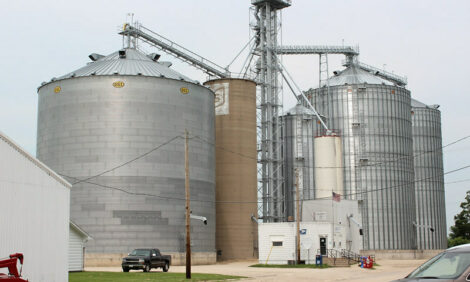



Another Year Pig Producers Would Prefer to Forget?
ANALYSIS - With global pig meat output growing faster than demand, pig producers had to manage with lower margins in 2015. What are the prospects for an upturn in 2016? Jackie Linden reports from the AHDB Outlook Conference this week.Increasing supply of pig meat and subdued demand combined to suppress pig prices in 2015 in the UK, EU and globally. With market conditions looking to be similar this year, it looks as if pork producers may be in for another difficult year in 2016, according to Stephen Howarth, Market Specialist Manager with the Agricultural and Horticultural Development Board (AHDB) Pork. He was speaking at the AHDB Outlook 2016 conference in London on 9 February.
On a more optimistic note, he sees signs of an EU-led price recovery later this year although he was uncertain about the timing and scale of any upswing. With the supply-and-demand situation delicately poised, Mr Howarth warned that any risk of an economic, political or disease nature could dramatically alter even that modestly optimistic forecast.
UK Market Challenges in 2015
Finished pig prices in Great Britain have been falling for more than two years and have “fallen off a cliff” since the New Year, such that the price in January was the lowest since 2002 in real terms, Mr Howarth said. The main reason is increasing pig meat output, which has been rising fairly steadily for more than 10 years. For the first time, UK pig meat production overtook that of beef and veal in 2015.
On the plus side, the pork price premium achieved by UK producers has been maintained compared to those in the EU, albeit at a reduced rate. While increased imports from the EU might be expected under these conditions, the increase in pork imports was small. Overall, exports were held in check by foreign exchange rates.
Falling retail prices for fresh pork did not lead to the rise in sales that might have been expected, and similar declines in the volume, value and price during 2015 were also recorded for bacon, sausages and ham.
A saving grace for the UK pig meat sector is that lower prices of feed and energy have helped to push production costs to a five-year low. Even this has only helped to mitigate the sector’s losses, which now average around 20 pence per kg, according to Mr Howarth. For most of 2015, producers would have been losing money on a full-cost basis, he said.
Strong Demand from Asia, Mexico in 2015
Pig producers in other EU countries experienced similar challenges to those in the UK in 2015 regarding oversupply in the domestic market, according to Mr Howarth. Following 10-year low levels, pig prices firmed up as the result of the Private Storage Aid scheme that began in early January and was closed after just three weeks. It is too early to know whether this is the start of a sustainable price recovery. With weaner prices in the EU apparently on the rise, there is an indication of a tightening in supplies ahead.
As in the UK, EU pig slaughterings and pig meat output were up in 2015 in spite of lower prices.
With the EU a net exporter of pig meat, outward trade is an important component of the sector’s health. While the region is still feeling the loss of the Russian market in early 2014 to some extent, export volumes have increased as the result of strong demand from Asia even if the value of those markets does not fully compensate for the loss of the trade with Russia. USDA data indicates that demand for pig meat imports increased significantly in 2015 in South Korea, China/Hong Kong and Mexico.
UK Market Outlook for 2016
Despite the challenging market conditions in 2015, there are no signs of any significant change in the size of the breeding herd in the UK in 2016. That means that improving productivity will be the main driver of slaughterings, and carcass weights are forecast to edge up slightly so pig meat production is likely to increase over the year more slowly than in 2015.
If the weakening of the currency continues, Mr Howarth forecasts some growth in imports but also further opportunities for exports of UK pig meat.
All in all, he expects pig prices will remain under pressure until consumer demand picks up.
Prospects for EU Pork Production
Low pork prices in the EU led to a slight reduction in the size of the EU breeding herd in June 2015 and early indications are that there were further and larger cuts by December, Mr Howarth noted. This would pave the way to a tightening in pig meat supplies in the EU during the second half of 2016 and a welcome recovery of pig prices there.
Increased output in the coming year is also forecast for other major exporting countries – the US, Canada and Brazil – but only by relatively small volumes.
Growth in import demand is forecast to be lower in 2016 than last year in almost all the major markets – Russia, Japan, Mexico, China/Hong Kong, South Korea and Australia – keeping global pork prices under pressure.
Word of Warning
With the pig meat market in a delicate condition, Mr Howarth warned that these forecasts could be greatly impacted by one or more of a number of what he called ‘wildcards’. These include significant changes in macroeconomic factors (exchange rates or commodity prices), disease outbreaks, feed price fluctuations, the state of the Chinese economy and uncertainty over the Russian ban on agrifood products, to name but a few.








